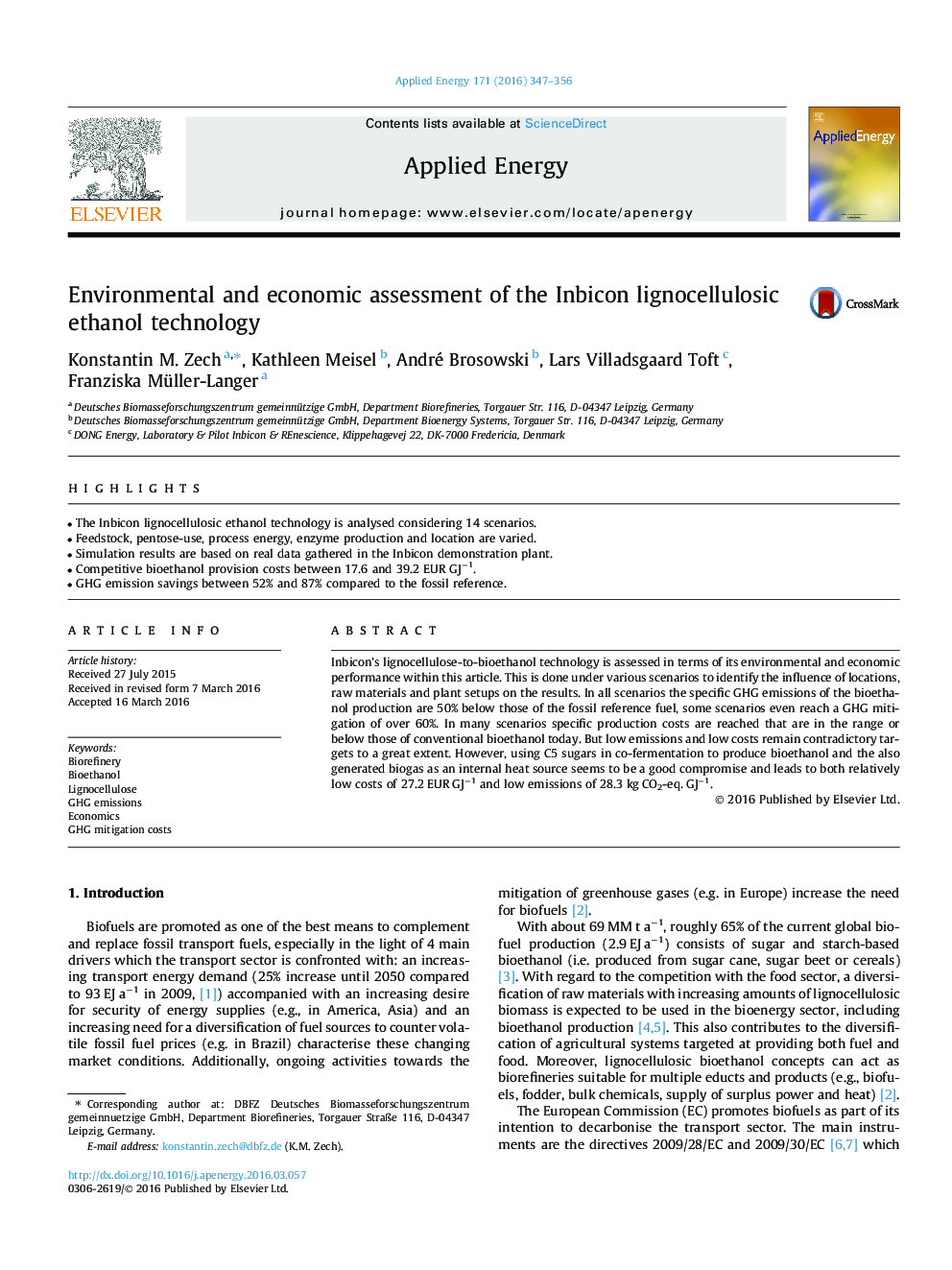| Article ID | Journal | Published Year | Pages | File Type |
|---|---|---|---|---|
| 6683321 | Applied Energy | 2016 | 10 Pages |
Abstract
Inbicon's lignocellulose-to-bioethanol technology is assessed in terms of its environmental and economic performance within this article. This is done under various scenarios to identify the influence of locations, raw materials and plant setups on the results. In all scenarios the specific GHG emissions of the bioethanol production are 50% below those of the fossil reference fuel, some scenarios even reach a GHG mitigation of over 60%. In many scenarios specific production costs are reached that are in the range or below those of conventional bioethanol today. But low emissions and low costs remain contradictory targets to a great extent. However, using C5 sugars in co-fermentation to produce bioethanol and the also generated biogas as an internal heat source seems to be a good compromise and leads to both relatively low costs of 27.2 EUR GJâ1 and low emissions of 28.3 kg CO2-eq. GJâ1.
Related Topics
Physical Sciences and Engineering
Energy
Energy Engineering and Power Technology
Authors
Konstantin M. Zech, Kathleen Meisel, André Brosowski, Lars Villadsgaard Toft, Franziska Müller-Langer,
